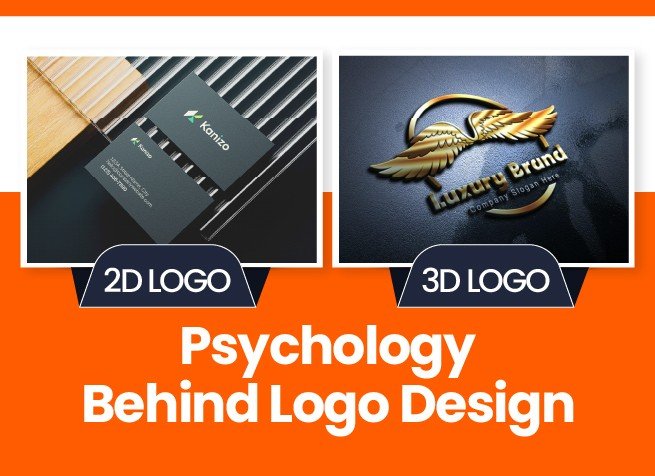In the world of branding, a logo design is more than just a visual symbol; it is a powerful tool that influences consumer perception and drives brand recognition. The design elements, colors, and shapes used in a logo can evoke emotions, convey messages, and shape consumer attitudes toward a brand.
Graphic designers employ various techniques when creating a logo, including two-dimensional and three-dimensional methods. These approaches add intrigue and depth to different types of logos, enhancing their visual appeal and impact. In this blog post, we’ll explore the psychology behind logo design and examine how both 2D and 3D logos impact consumer perception.
What do 2D and 3D Logos Entail?
In the beginning and traditionally, two-dimensional logos were widely favored, and to be frank, they still hold significance. They feature a flat appearance, which can sometimes be cartoonish but not always. They are generally less intricate compared to 3D logos designs.
Conversely, three-dimensional logo designs often lean towards skeuomorphic, exhibiting a more realistic appearance. They incorporate highlights and shadows, along with a z-axis. Designers have the freedom to color 3D logos using solid hues, textures such as grain or leather, and various patterns.
Understanding the Power of Visual Communication
Visual communication is a fundamental aspect of human interaction, and logos are one of the most potent forms of visual communication. Logos serve as visual cues that help consumers recognize and identify brands instantly. The logo design elements and imagery used in a logo can evoke specific emotions and associations, shaping consumers’ perceptions of the brand and influencing their purchasing decisions.
The Simplicity and Timelessness of 2D Logos
2D logo designs are characterized by flat, two-dimensional designs without depth or dimensionality. They often feature simple shapes, lines, and colors, conveying a sense of simplicity, clarity, and timelessness. 2D logos are popular among brands that seek to establish a strong and enduring identity. Examples of creating a logo that is 2D logos include those of Nike, Apple, and Coca-Cola.
The Psychological Impact of 2D Logos
2D logo designs evoke feelings of professionalism, reliability, and trustworthiness. Their clean and uncluttered designs communicate a message of clarity and transparency, instilling confidence in consumers. The simplicity of 2D logos also makes them highly versatile and adaptable across various marketing channels and platforms. They are easily recognizable and memorable, facilitating brand recall and loyalty among consumers.
Depth, Dimension, and Dynamism in 3D Logos
Unlike 2D logo designs>, three-dimensional (3D) logos incorporate depth, dimension, and perspective, creating a sense of realism and dynamism. 3D logos designs use shading, lighting, and visual effects to simulate depth and make the design appear lifelike. They are often associated with modernity, innovation, and creativity, making them popular choices for tech companies, gaming brands, and entertainment companies.
The Psychological Impact of 3D Logos
3D logos designs evoke feelings of excitement, energy, and engagement. Their dynamic and visually captivating designs capture consumers’ attention and stimulate curiosity. The depth and dimensionality of 3D logos create a sense of immersion and realism, making the brand experience more interactive and immersive for consumers. However, it’s essential to strike the right balance between creativity and readability to ensure that the logo remains recognizable and effective across different mediums.
Harnessing the Power of Color Psychology
Color plays a crucial role in logo design and has a profound impact on consumer perception and behavior. Different colors evoke different emotions and associations, influencing how consumers perceive a brand. For instance, red is commonly linked with passion, energy, and excitement, whereas blue is known to convey trust, reliability, and professionalism. By understanding the principles of color psychology, brands can use color strategically to evoke the desired emotional response and reinforce brand messaging.
In conclusion, the psychology behind creating a logo is a fascinating aspect of branding that has a significant impact on consumer perception and behavior. Whether they are two-dimensional or three-dimensional, logos serve as powerful symbols that communicate the essence of a brand and evoke specific emotions and associations. By understanding the psychological principles underlying logo design and leveraging them effectively, We can help you to create logos that resonate with consumers, foster brand loyalty, and drive business success in today’s competitive marketplace.
When crafting a logo, ensure it’s bespoke, reflecting your brand’s essence. It should be distinctive and aligned with your brand message. If uncertain about the logo type, outline its intended functions. Keep in mind, that logo design is iterative; enlist a professional once your vision is clear for the ideal logo. You can explore our services
